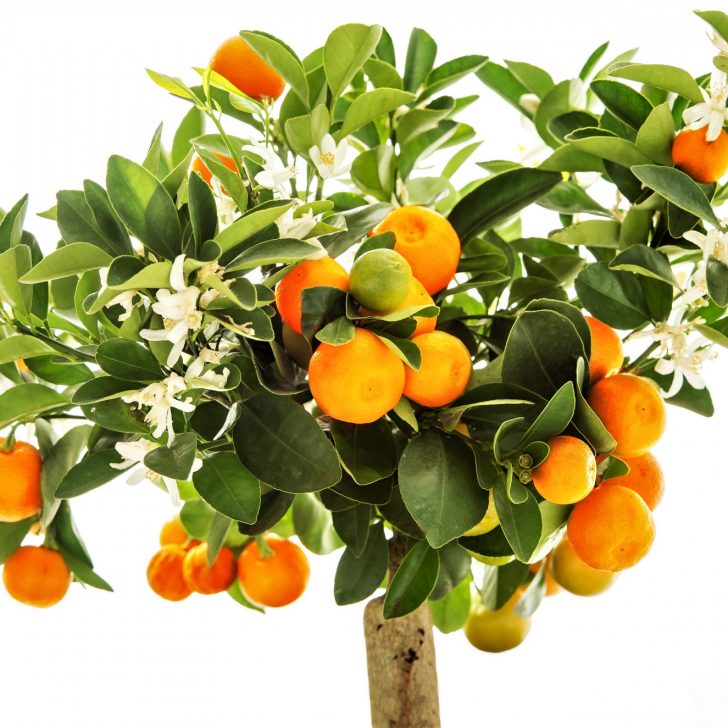So many of us living in suburban and urban areas have small yards, but that doesn’t mean you can’t enjoy your own freshly grown fruit!
Container fruit trees are attractive, easy to manage, and don’t take up very much space at all. Here are some of my favorite patio fruit trees. They look great and produce fruit 10 times better than you will find at the grocery store!
These patio fruit trees all grow well in California. Some of them, such as the citrus trees, will need to be brought inside during a frost but as long as you give them a sunny window, they should do well. Use this guide to bring a splash of color to your yard, no matter its size.
The 10 Best Container Fruit Trees for Your Patio
1. Lemon Tree
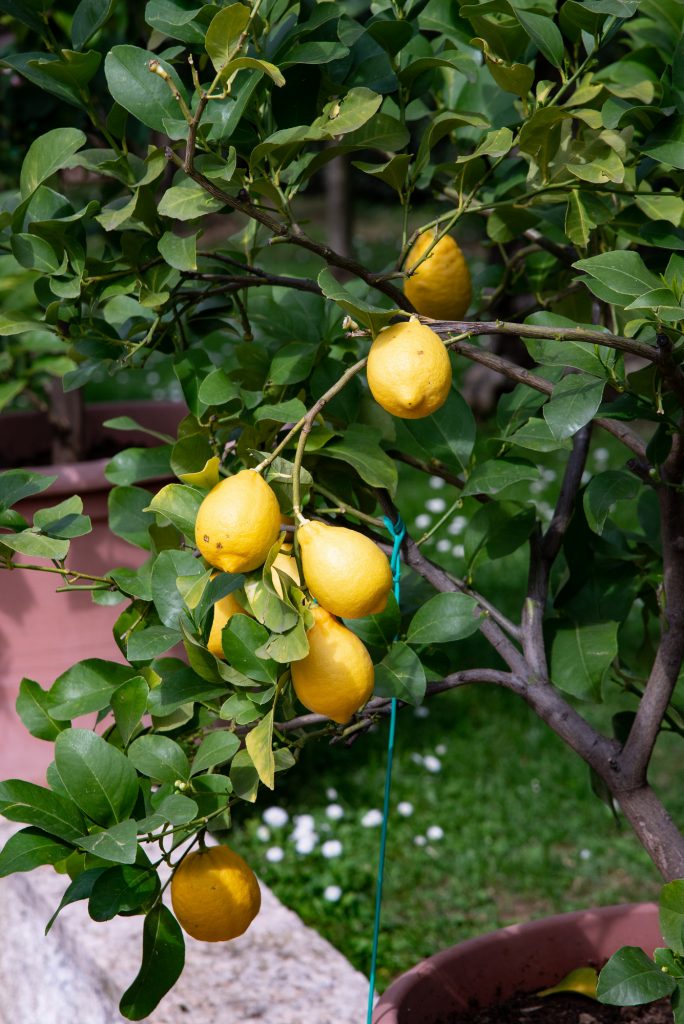
Lemons are probably the most classic patio trees in California. They are easy to grow in our mild climate and the convenience of being able to pick a lemon right off the tree whenever you need one just can’t be beat!
Growing lemons as container fruit trees also means that you can still have a lemon tree in areas that a subject to freezes in the winter. Simply bring the plant indoors when the first frost hits and keep it in a sunny window.
A lemon tree planted in a glazed ceramic pot is a cheerful and welcoming addition to a front yard walkway.
Dwarf Lemons are ideally suited for 15 gallon pots. You can go as small as 5 gallon, but this will reduce production. Choose a more lightweight container (like plastic) if you will have to move your tree indoors for the winter.
Recommended Lemon Varieties to Use as Container Fruit Trees
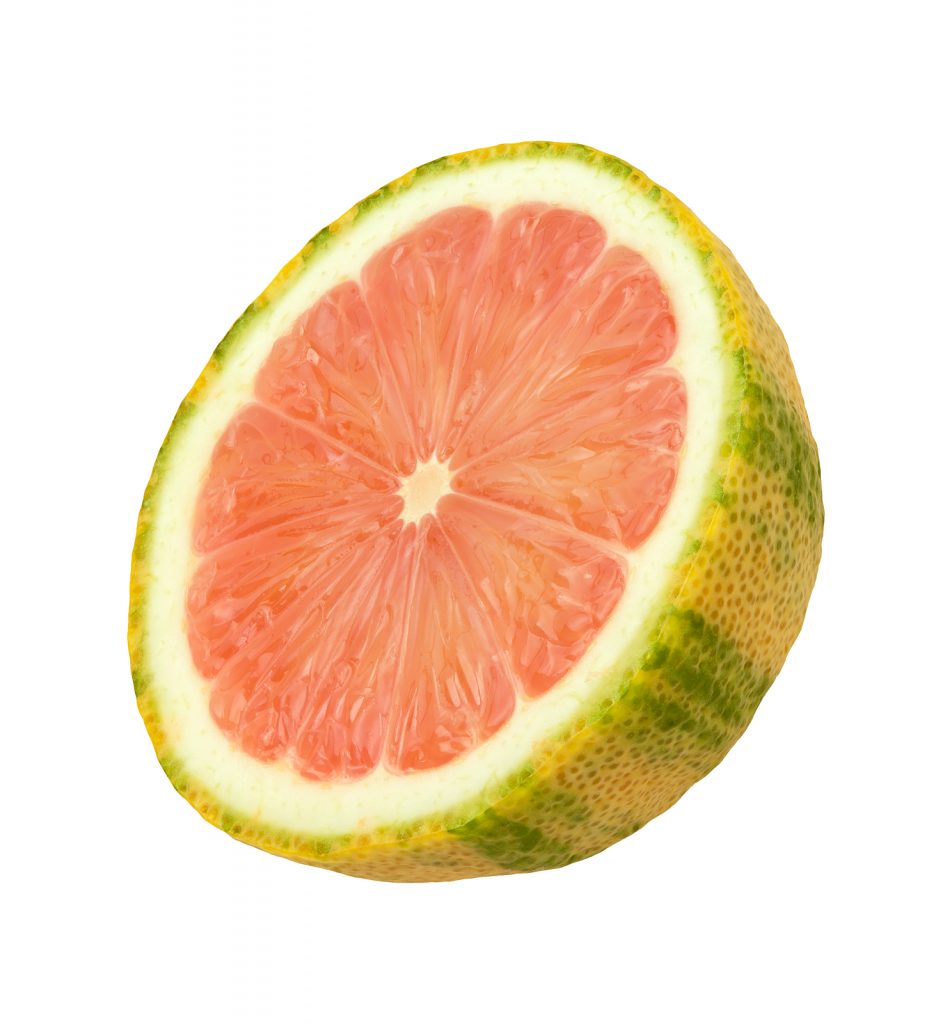
Whichever lemon you choose, be sure to purchase a dwarf variety. Meyer Improved dwarf lemon trees produce fruit with excellent flavor and grow well in a pot.
Pink Variegated lemons are stunners. They have lovely variegated foliage and produce fruit with green and yellow stripes and pink flesh! They have the flavor of a standard Eureka (similar to grocery store varieties) lemon and are dwarves.
Tomatoes also do well in a warm, sunny climate! Check out our tomato growing tips to ensure you have a bountiful tomato harvest.
2. Pomegranate
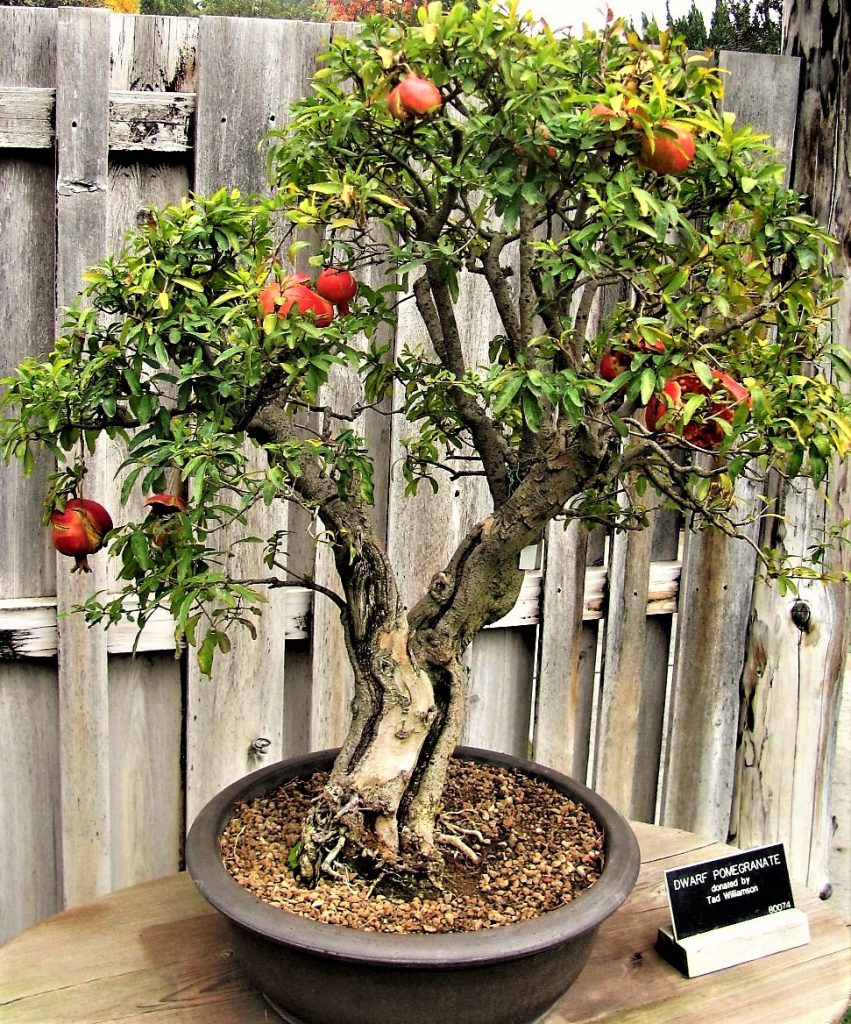
There is just something so beautiful about a pomegranate. It has this primitive, forbidden fruit vibe and the delicate arils are a wonderful addition to a salad or cheese platter.
Pomegranates can be expensive or hard to find in grocery stores, so having a tree at home is key for pomegranate lovers.
Pomegranate trees are ridiculously easy to grow in warm climates. They require far less water than many other tropical fruits, and it is best to let the soil dry out a bit in between waterings. They are not evergreen, and do lose their leaves in the fall.
Pomegranate trees can have the appearance of a shrub or a tree, depending on how you prune them. They are wonderful additions to a patio garden.
Recommended Pomegranate Varieties to Use as Container Fruit Trees
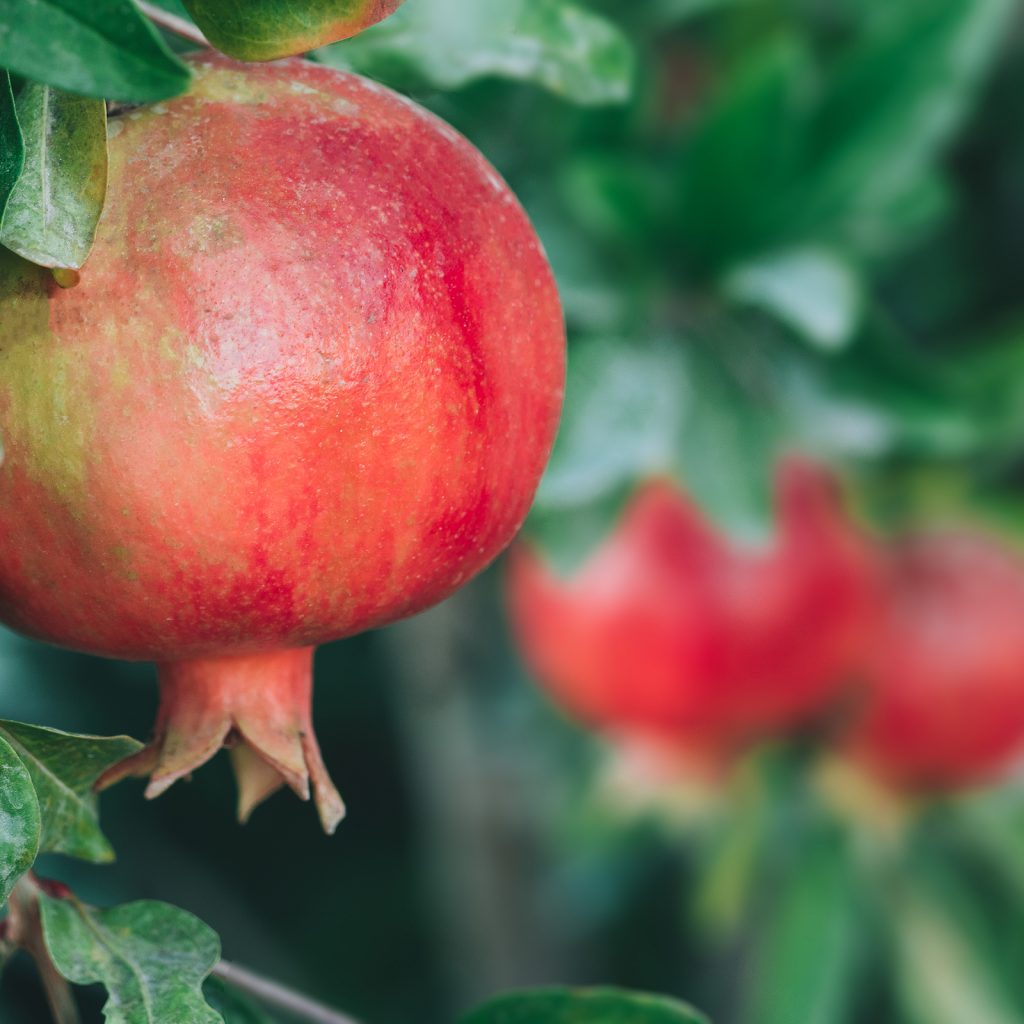
Opt for a dwarf variety of pomegranate as full size trees can row 20 feet in size. State Fair grows to about 5 feet and is best suited for a 15 gallon pot. Nana is only 2 to 3 feet tall and can grow quite happily in a 5-10 gallon pot.
3. Kumquat
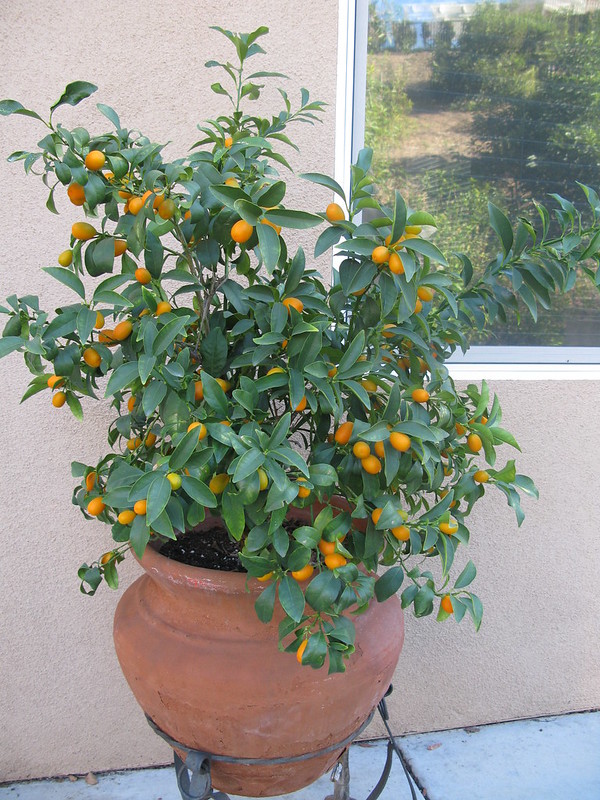
Kumquats are one of those fruits that many people have never actually tasted, let alone heard of. They are in the citrus family, native to China, and are a symbol of good luck.
Unlike most citrus fruit, the outer rind of this fruit is edible, and the sweetest part of the the fruit. I like to think of a kumquat as a tiny, reverse orange.
The rind is sweeter and the juice is tart and bitter. To eat a kumquat, simply pop the entire thing in your moth and chew to enjoy the sweet and tart tastes together. Kumquats are also great sliced and candied.
Kumquat trees are naturally small and perfect for a patio. They are also pretty hardy. Once I left on vacation and my house sitter failed to water my kumquat tree. It lost all of its leaves and I thought it was dead.
I left it in the corner of the yard for months. Then, it started to rain and suddenly, my kumquat began to sprout leaves and green stems once again! It had sprung back to life and even fruited that year!
Recommended Kumquat Variety to Use as Container Fruit Tree

The Nagami Kumquat is by far the most popular variety out there. It is perfect for a container. It can grow well in a 10 or 15 gallon pot. They do require frequent watering, especially in the summer when it is hot and dry.
4. Fig

My grandmother had a fig tree in her yard. It was ancient and grand, but it was also very large. Thankfully, you can grow a fig tree in a container so that you can enjoy the sweet flavor of a fresh fig without having it take up so much space.
Fig trees can take 8-10 years to start producing fruit when planted in ground but they produce fruit at within a couple years of planting inside of a container. Why? Because figs produce fruit best when their roots are constrained.
You can start with a smaller container and then transplant every couple of years until you reach the maximum size you would like your fig tree to grow. A half whiskey barrel is a great option for a fig tree.
Give it some sun and water and your fig will be quite happy. Water is the key to plump fruit, but don’t overwater! If your fig’s leaves begin to yellow, dial it back a bit.
You may have to throw a net over the tree during fruit season because squirrels are just as big of fans of figs as we are!
Recommended Fig Variety to Use as Container Fruit Tree

Mission figs are the most popular, but they grow quickly and aren’t ideal for a container. Instead, try varieties like Petite Negri fig and Brown Turkey. They are better suited to small spaces and can tolerate frequent pruning.
5. Clementines
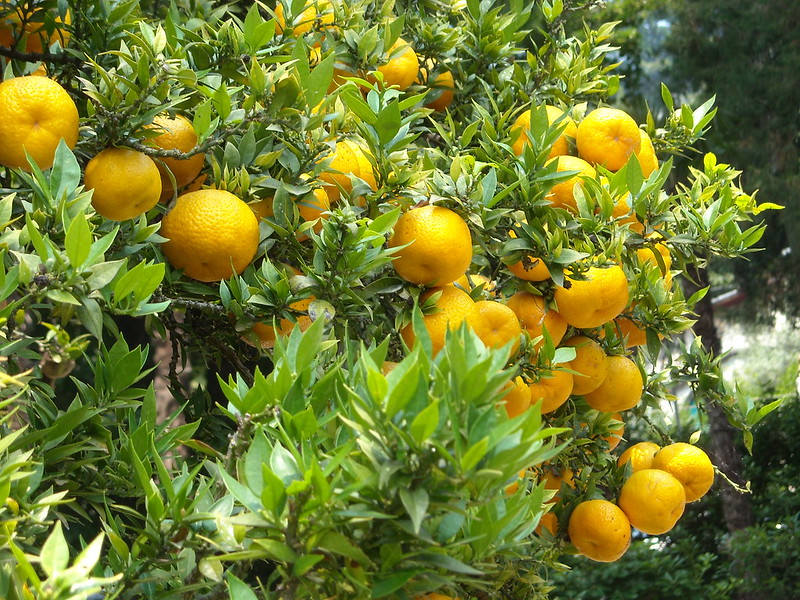
Not all mandarin orange trees are clementines, but all clementines are mandarin oranges. The fruit from this version of the mandarin orange is super easy to peel, mostly seedless, smaller in size, and full of flavor. It is the perfect “eat from the tree” orange for families.
Clementine trees are naturally shorter than standard oranges, making them one of the best container fruit trees for your patio. They are often grafted on dwarf stock, so they will be small in stature but voluminous in production. They are also very attractive trees.
The tree typically produces fruit in the late fall or early winter. As with all citrus trees, you will need to protect it from freezes. A Satsuma mandarin is also similar to the clementine and produces fruit that are very easy to peel as well.
6. Dragon Fruit
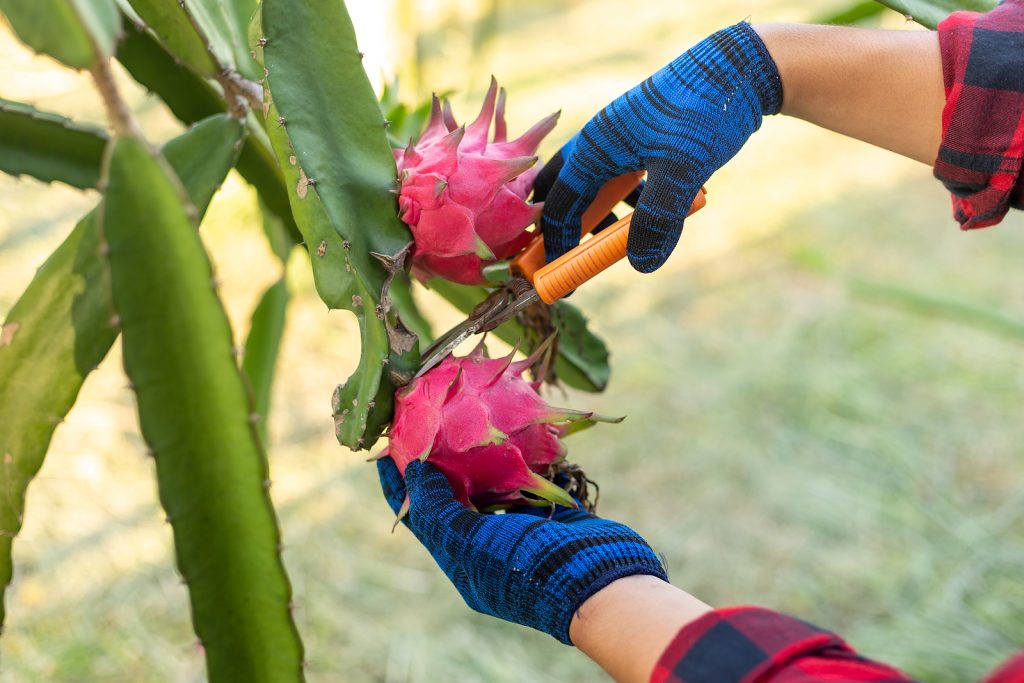
Dragon fruit (or Piraya) is another one of those exotic fruits that does extremely well in a container. In an arid climate like we have in Southern California, I have seen lots of dragon fruit plants potted in people’s yards.
The plant is native to South America and is a member of the cactus family which means it doesn’t need much water (score!). You want to plant a dragon fruit in sandy cactus soil. They can be grown easily from cuttings or just pick one up at your local nursery.
Dragon fruit do not tolerate freezes or prolonged temperatures over 100. So if you live in an area with extended periods of weather during the summer where your temps hover above 100, it probably isn’t a good fit for you.
Dragon fruit plants do need to be supported with a stake or trellis since it is a climbing plant. They bloom at night, so it is fun to go out and check out the blooms when the sun sets. When the plant is about 3 years old and 5 feet tall it will start producing fruit.
The fruit tastes like a mild kiwi and can be halved and scooped right out with a spoon. It is nice in salads or smoothies and full of antioxidants.
Recommended Dragon Fruit Varieties to Use as Container Fruit Tree
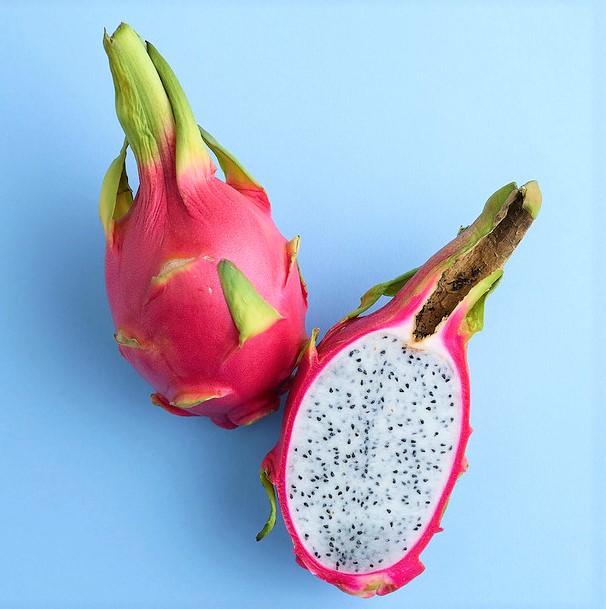
The variety you choose largely depends on what color flesh you are looking for. If you want the bright pink flesh to brighten up the color of smoothies, try the American Beauty. It self pollinates which is nice because many dragon fruit varieties require hand pollination or cross pollination from another dragon fruit.
If you prefer the white flesh variety try a Yellow Dragon Fruit. The exterior is yellow and the interior is white. It is self pollinating and said to be the sweetest of all the dragon fruit varieties.
The Vietnamese Jaina is another option if you would like a self-pollenating plant that has pink skin and white flesh.
7. Lime

The convenience of having a lime tree on your patio can’t be beat! I planted my lime tree in the ground and it got so big that I have limes coming out of my eyeballs!
In hindsight, I wish I would have planted my tree in a pot. That would have resulted in a smaller tree and much more manageable lime production.
Limes, like oranges and lemons, need to be protected from freezes and require regular watering.
Did you know that many limes varieties are actually at their ripest and most juicy when their skin changes from green to yellow? I didn’t until I planted my own lime tree!
Recommended Lime Varieties to Use as Container Fruit Tree
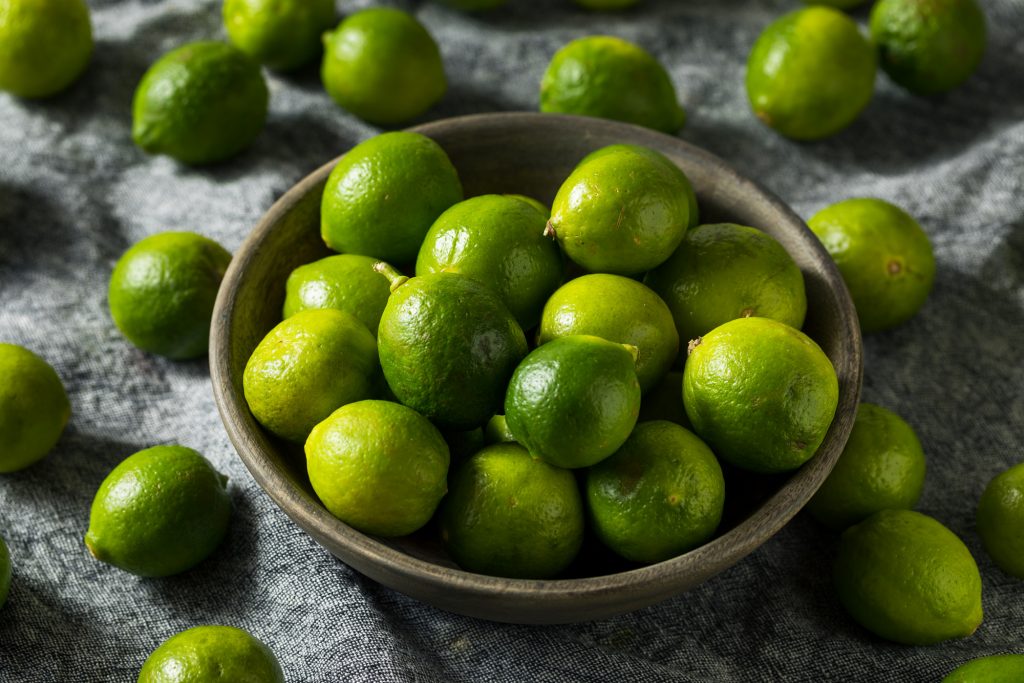
When planting limes, you need to decide which size limes you prefer. If you are looking for the little limes that are perfect for beer, you are best off with a Mexican Key Lime tree. Choose a dwarf variety to limit the tree size.
If you would prefer the more traditional lime size that you see in grocery stores (generally better for juicing), go with a Bearrs or Persian Lime tree. My Bearrs lime tree produces limes nearly year round.
8. Guava
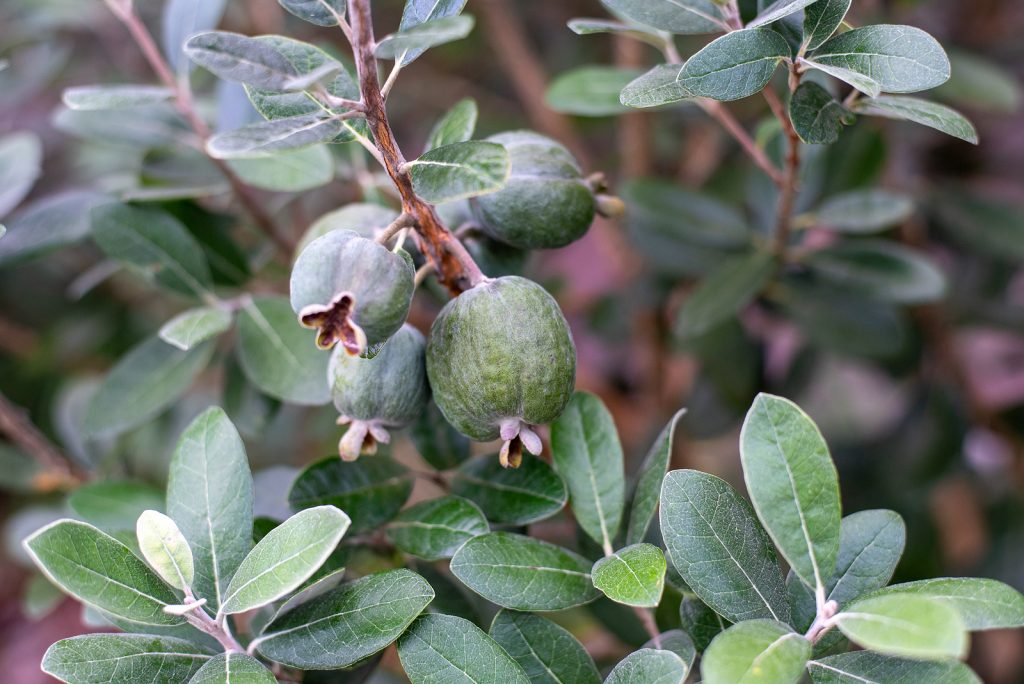
Guavas are easy to grow and taste great, making them another one of those container fruit trees you will want to add to your patio. Guavas are fairly drought tolerant once established and many varieties can handle a dip in temps down into the 20s.
Guavas have shallow roots and absorb water quickly, so they only need watering once a week in the summer and can go weeks without water during the winter.
Guava blossoms have a wonderful scent. The fruit take three to four months to mature after flowering. If your guava is a good producer, it is recommended that you thin fruit out to a maximum of four per branch, to keep the branches from breaking under the weight.
I suggest planting your guava in a 15 gallon pot to allow it room to grow. They have more of a shrub-like appearance than a traditional tree shape.
Recommended Guava Varieties to Use as Container Fruit Tree
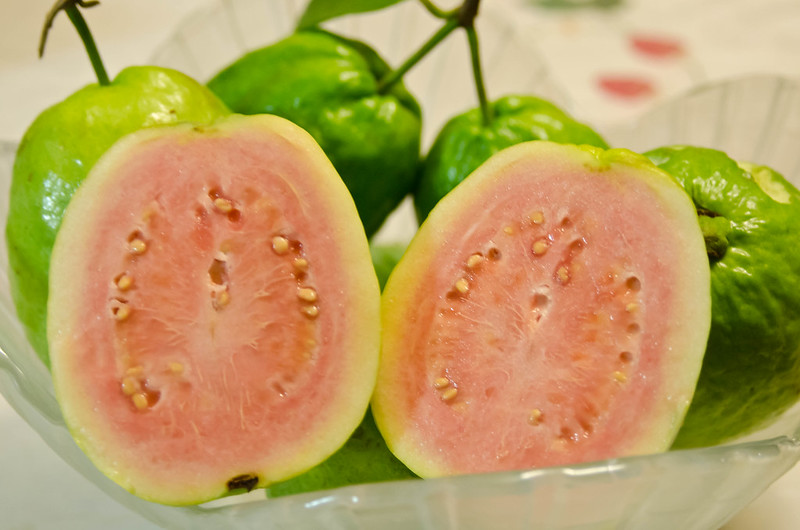
There are over 100 varieties of guava out there, and many have distinctly different flavors so you may want to add more than one option to your patio garden.
Pineapple Guava is a very popular container plant. It has beautiful blossoms (which are edible and have a bit of a cinnamon taste) and the fruit reminds many of the flavor of Juicyfruit gum. It is delicious!
The Brazilian Pink Guava has a sweet, traditional guava flavor and are great picked right off the tree! They do very well in containers and are drought tolerant. The fruits ripens in California during the fall.
The Strawberry Guava also has a traditional guava flavor and does very well in pots. It grows so well that it is considered to be an invasive species in some areas!
9. Loquat
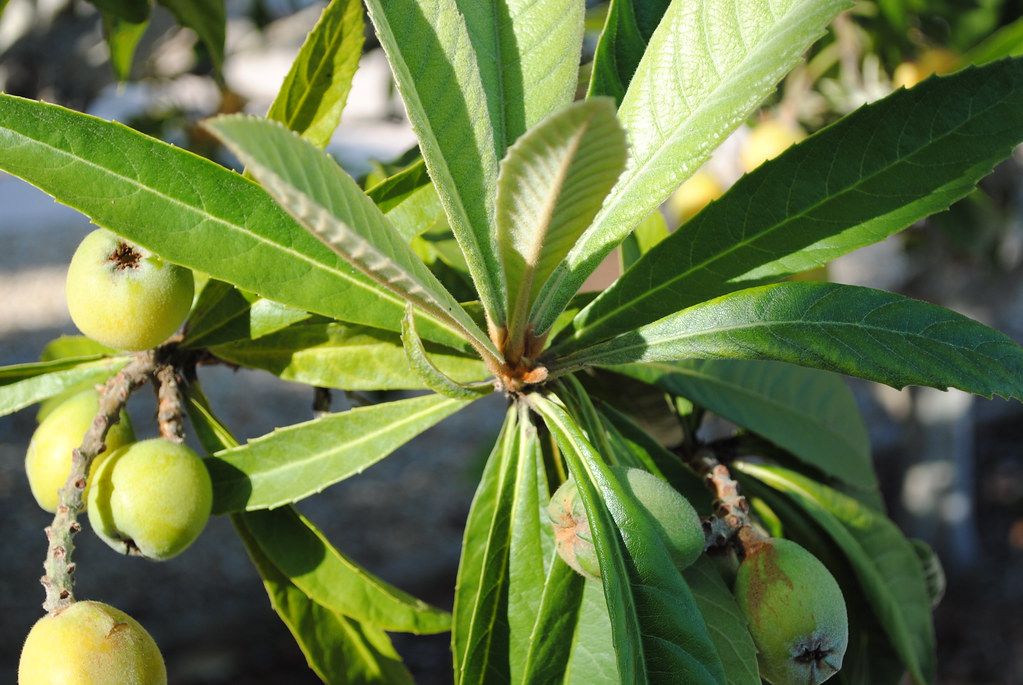
If you haven’t had the pleasure of tasting a loquat, than you are really missing out.
We had a loquat tree in our backyard when I was growing up and I used to eat them right off the tree until I made myself sick! It is sweet and tart, kind of like a cross between an apricot and a pineapple with citrusy undertones.
Most of the main population centers in California are well suited for loquat rowing, especially in Southern California. They do very well in containers as long as they are well-watered and provided with ample sunlight.
Loquat trees do best in containers that are at least 15 gallons in size.
Like citrus, they do well with deep watering and fertilization a couple times a year. You may need to net your tree during fruit season if the neighborhood birds catch on to how tasty these fruit are.
The fruit has orange flesh and yellowish-orange skin that bruises easily when ripe. This makes it hard to transport, which is why you don’t often see loquats in grocery stores. It also makes it an ideal pick-and-eat backyard fruit.
Recommended Loquat Variety to Use as Container Fruit Tree
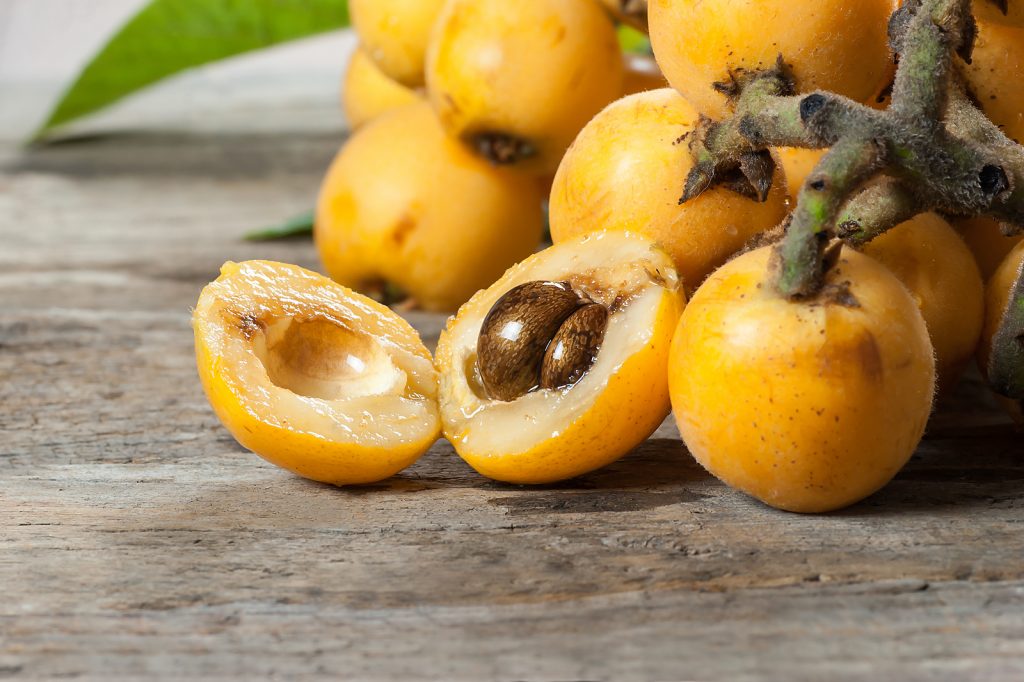
The Gold Nugget loquat is the most popular variety. It self pollinates and is a prolific bearer of fruit. Be sure to plant a dwarf variety (which are usually grafted onto a quince stock).
10. Apple
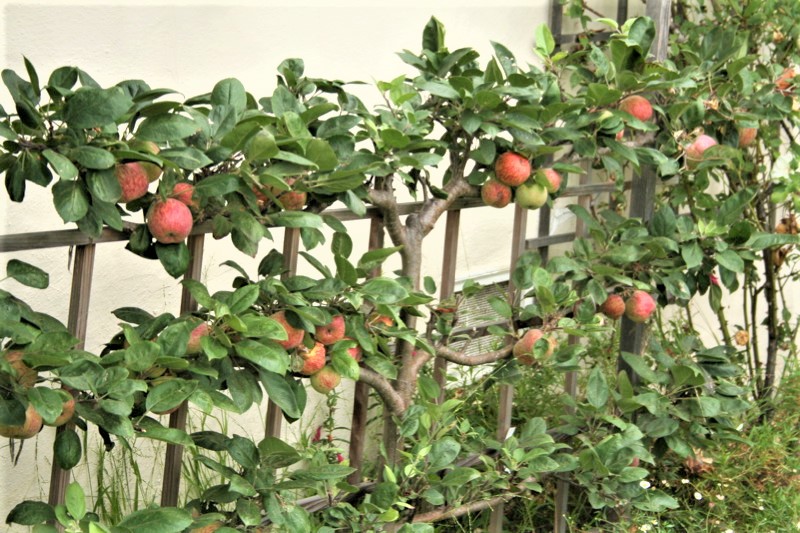
I will never forget the first time I saw an espalier apple tree growing. An espalier fruit tree is one whose whose branches are trained to grow flat against a wall, supported by a lattice.
It was such a clever idea. It allows people with small backyards or patios to enjoy their very own homegrown apples without dedicating a massive space to an apple tree!
Recommended Apple Varieties to Use as Container Fruit Tree
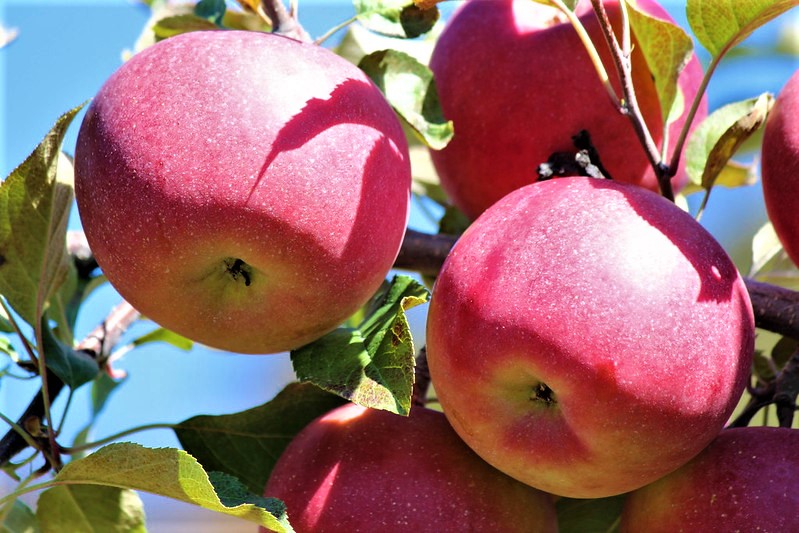
There are literally dozens and dozens of apple varieties out there, and it is important to choose a variety that will do best in your climate.
In Southern California, we don’t get very many chill hours so a low chill variety is key. The Anna apple is a popular espalier variety in California, it is ideal for small spaces.
Another great option is the Fuji apple. It is known for its great flavor and does well on a trellis. While you can attempt to trellis your own sapling, I suggest purchased one that is already espaliered from a local nursery,

